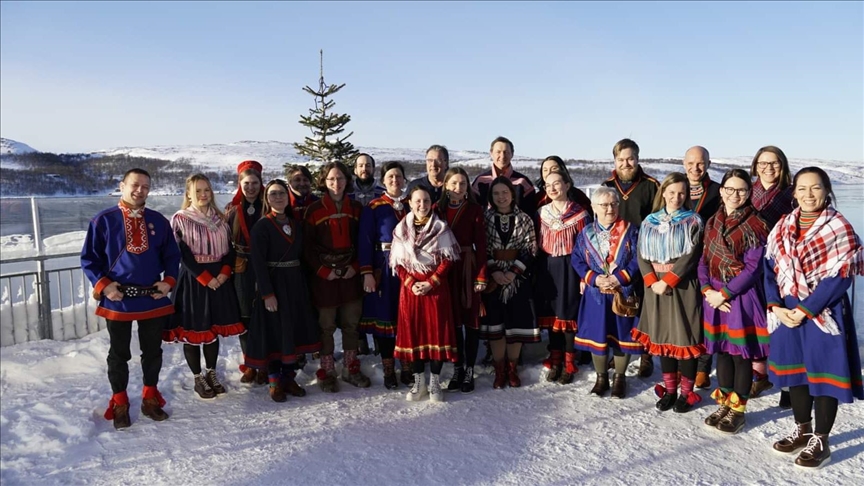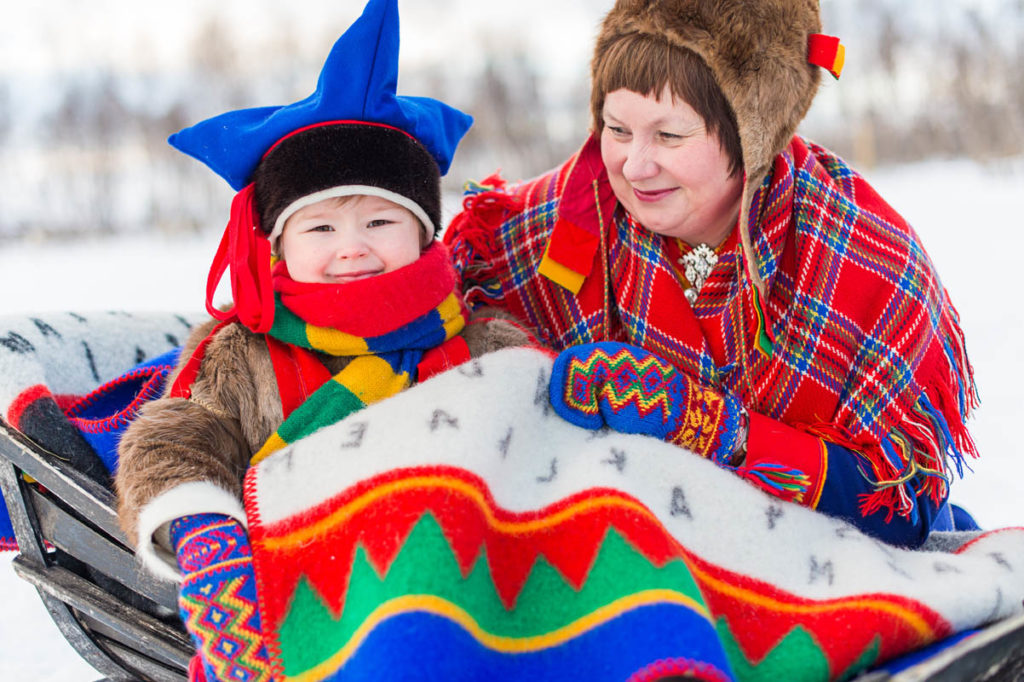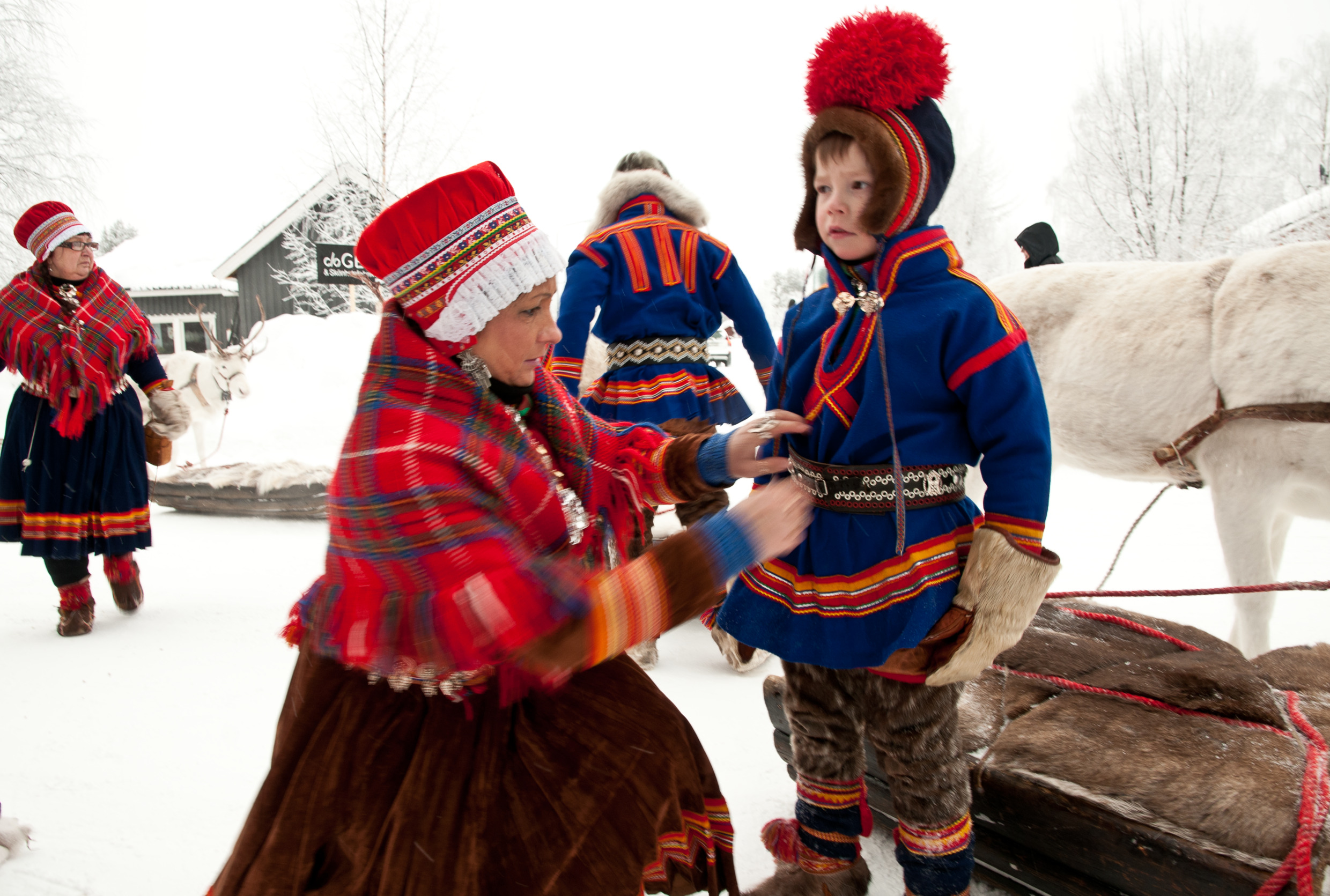“The Sami are not just a people, they are a history. A history of resilience and survival against forces that sought to erase them, to assimilate them into a dominant culture. They continue to embody a way of life that connects them to the land, to nature, and to a spiritual understanding of the world.” – Birgitta S. Berglund (Anthropologist)
Have you ever wondered about the Sami people in Sweden? Their way of life is truly unique and worth exploring. Let me tell you why.
The Sami have a rich culture. Their traditions, language, and deep connection to the land create a fascinating cultural tapestry. Despite the challenges of modern life, they’ve managed to keep their heritage alive.
Want to know more? Here’s a quick look:
Traditions: From reindeer herding to colorful festivals.
Language: They speak Sami, which is distinct and beautiful.
Connection to the land: Nature plays a huge role in their daily lives.
The Sami story is one of resilience. They have adapted to changes while keeping their culture intact. For example, reindeer herding is still a big part of their lives, but they’ve also embraced modern technology to make it easier.
When I visited Sweden, I was amazed by the Sami festivals. The colors, the music, the joy – it was unforgettable. It made me appreciate how they blend old customs with new ways of living.
The good news? You can experience this too. By learning about the Sami, you’ll see how ancient traditions can coexist with modern life. It’s a reminder that culture, in all its forms, enriches our world.
Introduction To Sami People
The Sami people are indigenous to the northern parts of Sweden. They have a rich cultural heritage and a unique way of life. Understanding their history and presence in Sweden is essential for appreciating their contributions to society.
Historical Background
The Sami people have lived in the northern regions for thousands of years. Their history is closely tied to the land and its natural resources. Traditionally, they were known for reindeer herding, fishing, and hunting. These activities were vital for their survival and culture. Over time, they adapted to changing environments and external influences while preserving their traditions.
Geographical Distribution
The Sami people primarily reside in the northern parts of Sweden, known as Sápmi. This area extends across Norway, Finland, and Russia as well. In Sweden, the Sami population is concentrated in regions like Norrbotten and Västerbotten. These areas are characterized by vast landscapes, forests, and mountains. The harsh climate and terrain have shaped the Sami way of life, making them resilient and resourceful.
Traditional Sami Lifestyle
The Sami people of Sweden have a rich cultural heritage. Their traditional lifestyle is deeply connected to nature. They rely on the land for their way of living. This connection shapes their daily routines and practices.
Nomadic Reindeer Herding
Reindeer herding is central to the Sami way of life. Many Sami people are nomadic herders. They move with their reindeer throughout the year. This movement helps the reindeer find food. It also allows the Sami to maintain their cultural practices.
During winter, the herders travel to the forests. In summer, they move to the mountains. This cyclical movement has been practiced for generations. The reindeer provide meat, milk, and materials. They are essential to Sami life.
Fishing And Hunting Practices
Fishing and hunting are vital for the Sami. They fish in the many lakes and rivers of their homeland. Traditional methods, like using nets and traps, are still common. Fishing provides food and is also a social activity.
Hunting is another important practice. The Sami hunt animals like moose and birds. They use every part of the animal. Meat for food, hides for clothing, and bones for tools. This respect for nature is a key part of their culture.
These practices are not just about survival. They are also about maintaining traditions. They connect the Sami people to their ancestors and their land.
Sami Language And Oral Traditions
The Sami people are indigenous to northern Sweden. They have a rich cultural heritage. One of the most interesting aspects of their culture is their language and oral traditions. These elements are key to preserving their identity and history.
Language Diversity
The Sami language is not just one language. It is a group of languages. Each Sami region has its own dialect. These dialects can be very different from each other. Some Sami people speak Northern Sami, while others speak Southern Sami. There are also other dialects like Lule Sami and Pite Sami.
Despite these differences, all Sami languages share common roots. They belong to the Uralic language family. This family also includes Finnish and Hungarian. Learning the Sami language is important for cultural preservation. It helps keep their traditions alive.
Storytelling And Folklore
Storytelling is a vital part of Sami culture. It is how they pass down their history. Elders tell stories to younger generations. These stories often have moral lessons. They also explain natural phenomena and historical events.
Many Sami stories feature characters from their mythology. These include gods, spirits, and heroes. For example, the sun goddess Beaivi is a key figure. Her story explains the changing seasons. Folktales also often include animals like reindeer and bears. They play important roles in the Sami way of life.
The oral tradition is more than just stories. It includes songs and chants. One well-known form is the “joik.” A joik is a type of traditional Sami song. Each joik is unique. It can be about a person, place, or event. Joiking is a way to express emotions and memories.
By preserving their language and oral traditions, the Sami keep their culture vibrant. It helps them maintain a strong sense of identity. This is crucial for their community’s future.
Sami Art And Handicrafts
The Sami people in Sweden have a rich tradition of art and handicrafts. Their creations are not just beautiful but also deeply rooted in their culture. Sami art reflects their connection to nature and their way of life.
Duodji Craftsmanship
Duodji is the traditional Sami word for handicrafts. These crafts include both functional items and decorative art. Sami artisans use materials like wood, bone, and reindeer antlers. They also use leather and textiles.
Sami craftspeople create items such as:
Knives with intricate handles
Beautifully carved bowls
Traditional clothing and accessories
Each piece of Duodji is made with care and skill. The artisans pass their techniques down through generations. This keeps their traditions alive.
Symbolism In Art
Sami art is rich in symbolism. Many designs have deep meanings. These symbols often represent nature and their spiritual beliefs. Common motifs include reindeer, fish, and birds. These animals are important in Sami culture.
Sami artists also use colors with specific meanings:
Color | Symbolism |
|---|---|
Red | Life and energy |
Blue | Sky and spirituality |
Green | Nature and growth |
Yellow | Sun and happiness |
Sami art is not just about beauty. It is a way for the Sami to express their identity. Through their art, they share their stories and traditions with the world.
Sami Music And Dance
The Sami people, native to the northern parts of Sweden, Norway, Finland, and Russia, have a rich cultural heritage. Sami music and dance play a vital role in their traditions. These art forms are unique and deeply rooted in their history. They offer a glimpse into the Sami way of life, spirituality, and connection to nature.
Joik Singing
Joik is the traditional form of Sami singing. It is one of the oldest musical traditions in Europe. Each joik is a song dedicated to a person, animal, or place. Joik singing has no fixed lyrics. It is often improvised and personal. The singer uses their voice to express deep emotions. The sound of joik can be haunting and beautiful.
Traditional Instruments
Sami music features unique instruments. The most well-known is the fadno, a type of flute made from angelica stems. Another important instrument is the goat horn, used in ceremonial music. The Sami drum, or goavddis, is central to Sami rituals. It is decorated with symbols representing the universe. These instruments produce distinct sounds. They transport listeners to the heart of Sami culture.

Sami Festivals And Celebrations
The Sami people of Sweden have a rich cultural heritage. Their festivals and celebrations are vibrant displays of their traditions and way of life. These events offer a unique insight into the Sami community. They highlight their connection to nature, their history, and their values.
Stállo Festivals
One of the most fascinating festivals is the Stállo Festival. This event is rooted in ancient Sami mythology. Stállo is a mythical creature in Sami folklore. The festival celebrates this legend with storytelling, music, and dance. Visitors can enjoy traditional Sami cuisine. They can also participate in workshops and learn about Sami crafts and skills.
Seasonal Celebrations
The Sami people celebrate various seasonal events throughout the year. Each season holds significance in their culture. These celebrations mark changes in nature and the Sami’s way of life.
Spring is welcomed with the reindeer calving season. It is a time of renewal and hope. Sami people gather to celebrate the birth of new reindeer calves. They perform traditional songs and dances. They also give thanks for the upcoming summer.
Summer brings the Midnight Sun Festival. This event celebrates the period when the sun never sets. Sami communities come together for days of continuous daylight. Activities include outdoor games, storytelling, and feasting. It is a time of joy and community bonding.
Autumn is marked by the Reindeer Migration Festival. Sami families gather to move their reindeer herds to winter pastures. This festival includes ceremonies to ensure a safe journey. It is a time of hard work and togetherness.
Winter is celebrated with the Sun Festival. As the sun returns after the polar night, Sami people rejoice. They hold bonfires, tell stories, and sing songs. It is a time of reflection and looking forward to the new year.
Season | Festival | Activities |
|---|---|---|
Spring | Reindeer Calving Season | Songs, dances, and thanksgiving |
Summer | Midnight Sun Festival | Games, storytelling, feasting |
Autumn | Reindeer Migration Festival | Ceremonies, community bonding |
Winter | Sun Festival | Bonfires, stories, songs |
Sami Rights And Political Movements
The Sami people, indigenous to Sweden, have long fought for their rights. Their history is rich with cultural heritage and a deep connection to nature. Over the years, the Sami have faced numerous challenges. These include struggles for recognition and political representation. The journey towards equality has been arduous, but progress is being made.
Struggle For Recognition
The Sami’s struggle for recognition dates back many centuries. They have sought acknowledgment of their unique culture and way of life. Historically, the Sami faced discrimination and marginalization. This included restrictions on their traditional practices. Despite these hardships, they continued to persevere. Their resilience is a testament to their strong community spirit.
In recent decades, the Sami have achieved significant milestones. These include the establishment of the Sami Parliament in Sweden. This body represents Sami interests and works to protect their rights. The recognition of Sami languages as official minority languages is another key achievement. These steps have been crucial in preserving Sami identity and heritage.
Current Political Landscape
Today, the Sami political landscape is more active than ever. The Sami Parliament plays a vital role in advocating for Sami rights. This includes issues related to land use, reindeer herding, and cultural preservation. Sami representatives work closely with Swedish authorities to address these concerns.
There are ongoing efforts to enhance Sami political representation. This involves increasing their influence in national and regional decision-making processes. The Sami continue to push for greater autonomy and control over their traditional lands. They seek to ensure that their voices are heard and respected.
The journey towards full recognition and equality is still ongoing. The Sami people remain steadfast in their pursuit of justice. Their dedication to their culture and rights inspires many. The progress made so far is a testament to their strength and unity.
Challenges Facing Sami People
The Sami people in Sweden face numerous challenges that threaten their way of life. Despite their rich cultural heritage, they encounter obstacles in preserving their traditions and environment. These challenges impact their daily lives and future generations.
Cultural Preservation
The Sami people strive to maintain their unique culture and traditions. Modern influences and societal changes threaten their traditional way of life. Younger generations often leave their communities for urban areas. This migration results in a loss of language and cultural practices. Efforts to teach Sami language and customs to children are crucial.
Traditional crafts and music also face decline. Fewer young people learn these skills from elders. Cultural festivals and events play a vital role in keeping these traditions alive. Support from the government and organizations is essential for cultural preservation.
Environmental Threats
The Sami people’s connection to nature is strong. Their reindeer herding practices depend on a healthy environment. Climate change impacts their traditional lands. Changes in weather patterns affect reindeer migration and grazing. Warmer winters result in less snow, making it difficult for reindeer to find food.
Industrial activities pose another threat. Mining, logging, and wind power projects encroach on their lands. These activities disrupt reindeer habitats and migration routes. The Sami people often have little say in these developments. Legal protections and environmental regulations are needed to safeguard their lands.
Future Of Sami Culture
The Sami people, indigenous to Sweden, have a rich and vibrant culture. As the world changes, so does the future of Sami culture. Preserving and promoting their traditions is crucial. This ensures the Sami culture thrives for future generations.
Youth Involvement
Sami youth play a significant role in preserving their culture. They actively participate in traditional activities. These include reindeer herding, handicrafts, and language learning. Schools in Sami regions teach the Sami language. This helps the youth connect with their heritage. Sami youth also use social media to share their culture with the world. They create videos, write blogs, and post pictures. This modern approach brings awareness and pride to their culture.
Global Awareness
Global awareness is crucial for the future of Sami culture. International organizations highlight Sami traditions and issues. This attention helps in gaining support for their rights and culture. Cultural exchange programs allow Sami people to share their heritage. They travel and perform traditional music and dance. Exhibitions and festivals showcase Sami art and crafts. These events educate people about Sami traditions. They also help in preserving the culture for future generations.


Frequently Asked Questions
Who Are The Sami People In Sweden?
The Sami people are indigenous inhabitants of Sweden. They have a unique culture, language, and traditions. Historically, they are known for reindeer herding.
What Language Do Sami People Speak?
The Sami people speak the Sami languages. These languages belong to the Uralic language family. There are several distinct Sami languages.
Where Do The Sami People Live In Sweden?
The Sami people predominantly live in Sápmi. This region spans northern Sweden, Norway, Finland, and Russia.
What Is Traditional Sami Clothing?
Traditional Sami clothing includes the gákti. It is worn during cultural events and ceremonies. The design varies by region.
Conclusion
The Sami people in Sweden have a rich cultural heritage. Their traditions and lifestyle offer valuable insights. Understanding their history enriches our knowledge of indigenous cultures. Respect and preservation are key. We must appreciate their unique contributions. Supporting their rights ensures their culture thrives.
Let’s celebrate the Sami community. Their story is a vital part of Sweden’s fabric. Embrace their heritage and learn more. This can foster respect and understanding.







